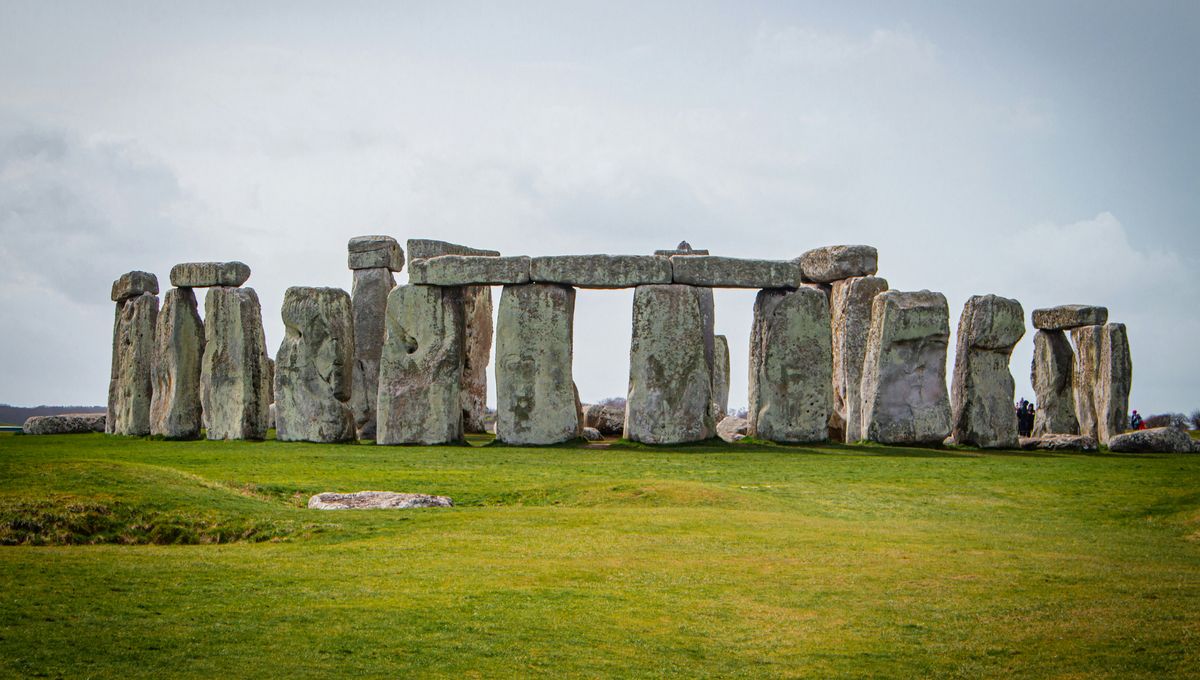
A small fragment of rock found at Stonehenge in 1924 may provide the key that unlocks the mystery of how the prehistoric monument was constructed. Known as the Newall Boulder, the bullet-shaped lithic lump sits at the heart of a heated archaeological dispute over whether the stone circle’s enormous building blocks were brought to the site by people or natural forces.
Located on the Salisbury Plain in Wiltshire, southern England, Stonehenge was built by Neolithic communities using raw materials from across Great Britain. The monument’s so-called bluestones, for example, hail from the Preseli Hills in Wales – some 240 kilometers (150 miles) from the ancient landmark – while the Altar Stone originates an incredible 700 kilometers (430 miles) away in northeast Scotland.
How these great chunks of rock were transported over such huge distances remains unclear, although an analysis of the Newall Boulder in the early 1990s suggested that it may represent a glacial erratic – meaning it was carried to the Salisbury Plain by a glacier thousands of years ago. The implication is that most or all of Stonehenge’s building blocks were found in the local vicinity by the monument’s builders, who didn’t actually have to transport them across the country.
Archaeologists have since been engaged in a vigorous to-and-fro, with some supporting the glacial erratic hypothesis while others vehemently oppose it. In the latest installment of this scholarly dispute, the authors of a new study seek to finally crush the ice transport theory in favour of the idea that the rocks were all brought to Stonehenge by people.
The paper is a response to another study published last year that noted that the surface wear characteristics of the Newall Boulder appear consistent with sub-glacial abrasion, thus indicating that the stone was carried by ice. However, the researchers refute this conclusion, arguing that “none of these wear characteristics are clearly diagnostic of glacial transport; most could be simply generated by surface weathering exploiting internal discontinuities.”
They go on to explain that there is no evidence of glaciation on the Salisbury Plain, supported by a complete lack of other glacial erratics or glacial deposits in the area. Such a finding would appear to rule out the possibility of Stonehenge’s building blocks having been carried to the site by ice.
Taking a closer look at the Newall Boulder, the study authors determine that it probably broke off from one of Stonehenge’s bluestones. They also say that its petrographic features are identical to those seen in the rhyolite at a rocky outcrop called Craig Rhos-y-felin, which is located in the Preseli Hills in Wales.
Importantly, there are no signs of glaciers extending from this site towards Stonehenge, but the evidence for prehistoric quarrying at Craig Rhos-y-felin is described as “very strong”. According to the researchers, all of these factors point towards the active extraction and transport of Stonehenge’s bluestones beginning around 3000 BCE, with little to no data supporting the idea of glacial transport.
“In summary, we reiterate our earlier interpretation that the Newall boulder is not a glacial erratic, that there is no evidence of glaciation on Salisbury Plain, and that the bluestones were transported to Stonehenge by humans rather than by ice,” write the authors.
The study has been published in the Journal of Archaeological Science: Reports.
Source Link: Were Stonehenge’s Bluestones Transported by Humans Or Ice? 100-Year-Old Discovery Sparks Debate